If I had to pick a single vintage lure to fish with for the rest of my life it would have to be the Shakespeare Swimming Mouse. Growing up in Ohio it was the favorite plug 60 years ago of those who fished the muddy waters of Indian Lake. The black color was a particular favorite. I longed for one for several years and finally found one in a sporting goods store in 1957. I was told then that they were no longer in production and I heard the same story over and over in tackle shops, “I could sell dozens of them if only they were available”. It was this search that started me collecting old lures and over the years has made me a Shakespeare Mouse junkie. I don't collect them, I just can't pass one up if they are cheap, no matter how beat up they are or if I already have a dozen in that color and size.
The following ad is from the July, 1936 issue of Sports Afield. There are lots of ads for this bait over the years but this one is representative and besides I really like this magazine cover LOL.
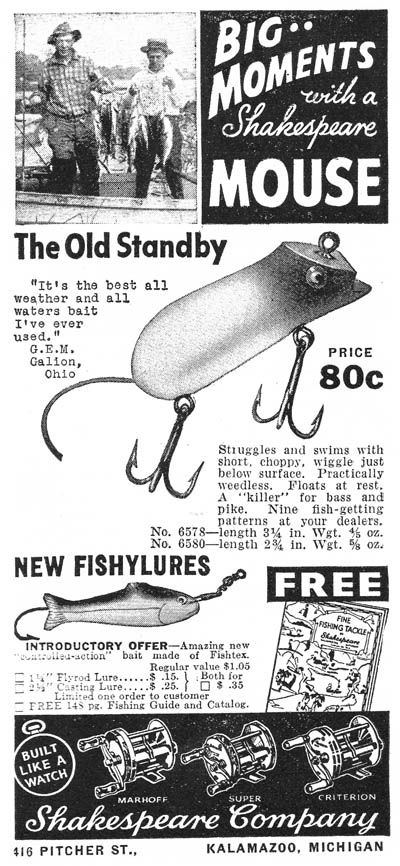
As near as I have been able to determine (it has not been easy to find hard evidence) the Shakespeare Swimming mouse was introduced circa 1921 and at that time came in the gray colored Shakespeare box. The introduction of this lure and Shakespeare's change to orange and blue boxes must not overlap too much in time as the earlier combination is seldom seen. The bait contained in those gray boxes is what I take to be the first version of the mouse. It has a noticeably constricted neck and is also fairly scarce. The second, more common, long-bodied early version was abandoned in time for the 1927 season according to the following ad in the March 1927 issue of Shakespeare's Tackle Magazine.
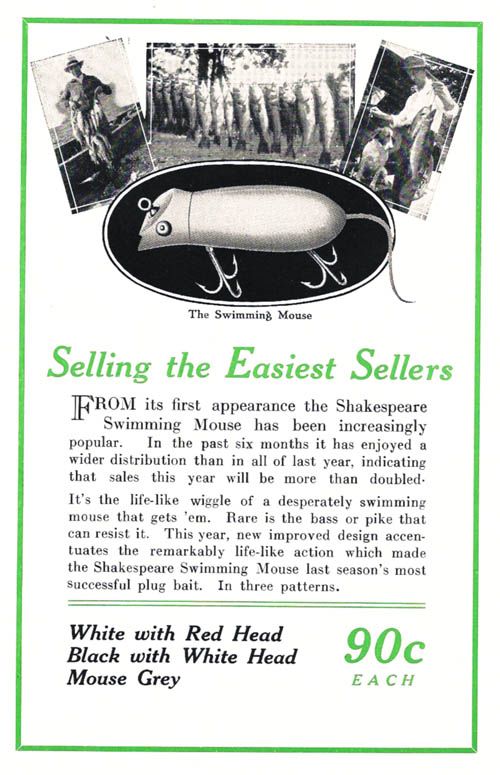
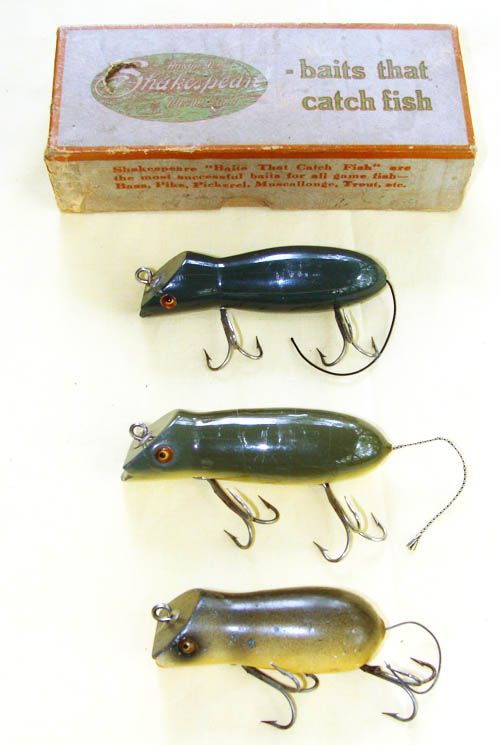
This last change seems to have really increased the fish catching abilities of the bait. I have never had much luck with either of the early versions, but the shorter post-1926 version has been a very effective fish catcher.
Over the years, Shakespeare introduced several new sizes of the Swimming Mouse to take advantage of the move to lighter baitcasting and the introduction of spinning. They even produced a somewhat scarce fly rod version. A plastic version, the Glo-Lite, was introduced just prior to WW2, but we will save that one for next week.
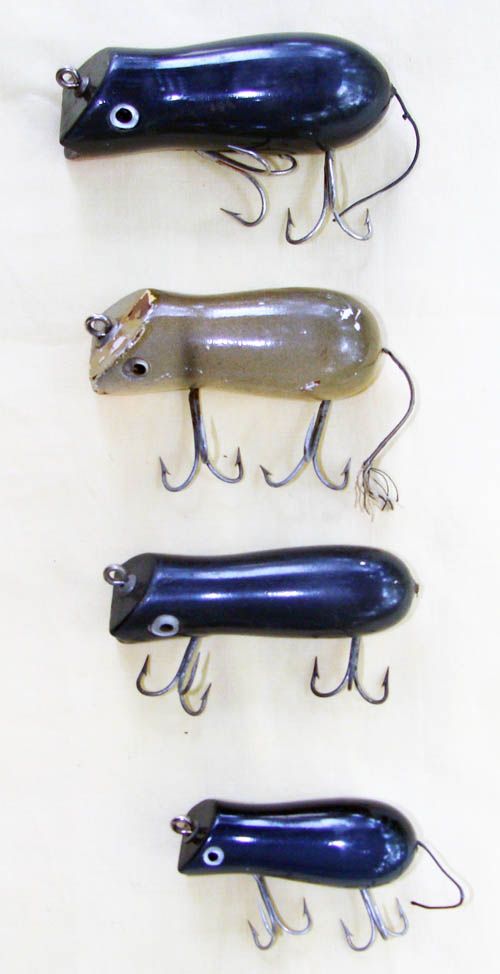
It is difficult to say exactly what makes the Swimming mouse so effective. In the water it has nice action but no more than many other baits. With the weight distribution and aerodynamics of a practice plug, its shape certainly makes it one of the most pleasant baits to cast, even into a stiff headwind. All this being said, the darn thing just keeps catching fish for beginners and old hands alike. Off hand, I can think of three people who looked at me with skeptical eyes when I attached a Shakespeare Swimming Mouse on a rod for them. None of them had ever fished much. Two of them caught bass on their first cast and the other, after deriding the appearance of the plug, caught two 5 pound largemouths! I asked him afterwards what he thought of the bait then: “Greatest bait ever made!” He just could not understand why they were no longer on the market.
The Shakespeare Swimming mouse does have some problems associated with production. Some are made of much denser wood than others and line ties on later models are often off center. This results in some individual plugs that work far better than others. Some won't leave the surface and others get down three or four feet. This last variation is not all bad as the bait is most effective swimming over submerged weed tops. If you know how deep each mouse runs, one simply selects the one that is appropriate for the weed bed one is fishing. My tackle box currently contains nine of them and each has its niche when it come to fishing. I have never felt that the casting line tail provided on each mouse ads to its effectiveness and I usually cut them off.
Some years back I wrote in an article that I had owned more than 100 Shakespeare Swimming Mice. This sounds like an exaggeration but it is true! I sold 75 to an antique dealer 20 odd years ago. They were ones that I did not feel made the grade when it came to actual fishing. There have been many since then and the following picture shows a few I have on hand presently waiting to be tried out. LOL

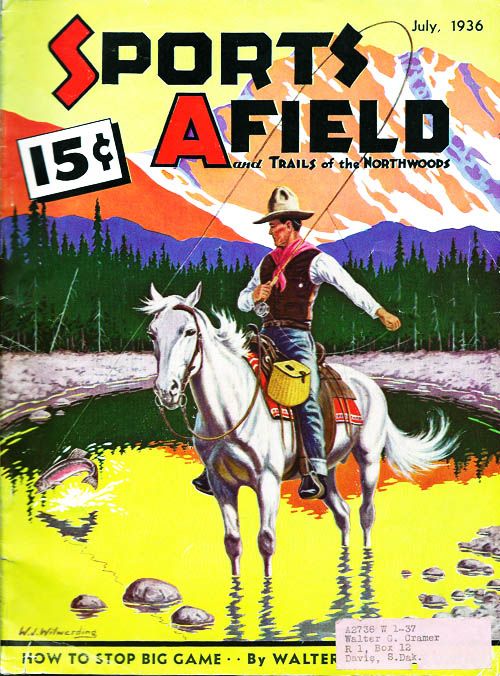
-- Bill Sonnett
1 comment:
Great article, great bait.It's hard to believe they quit making them.It would be interesting to know why.
Bill Z.
Post a Comment